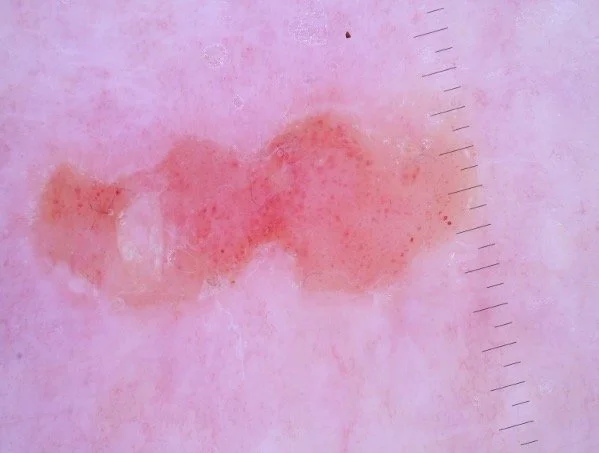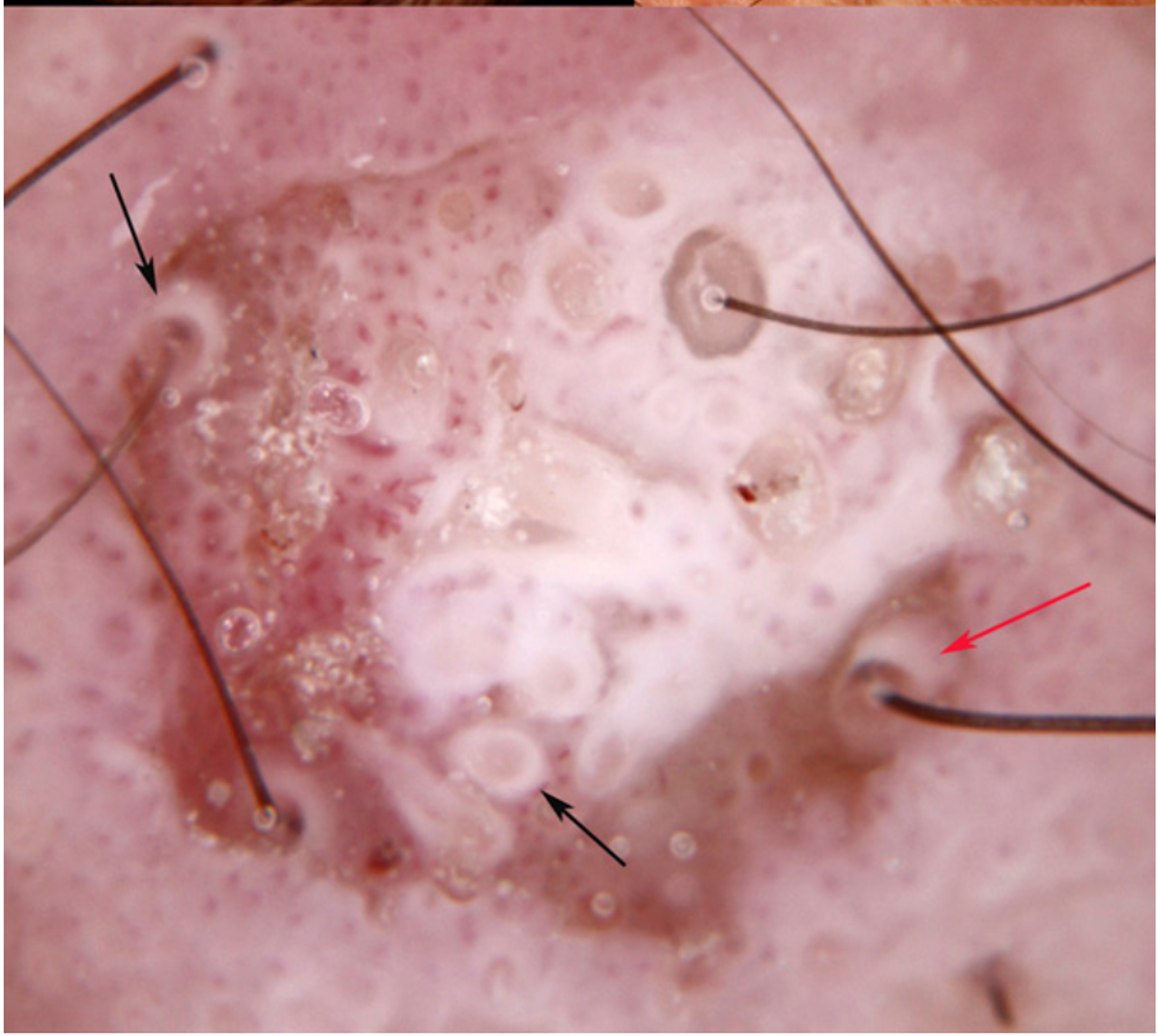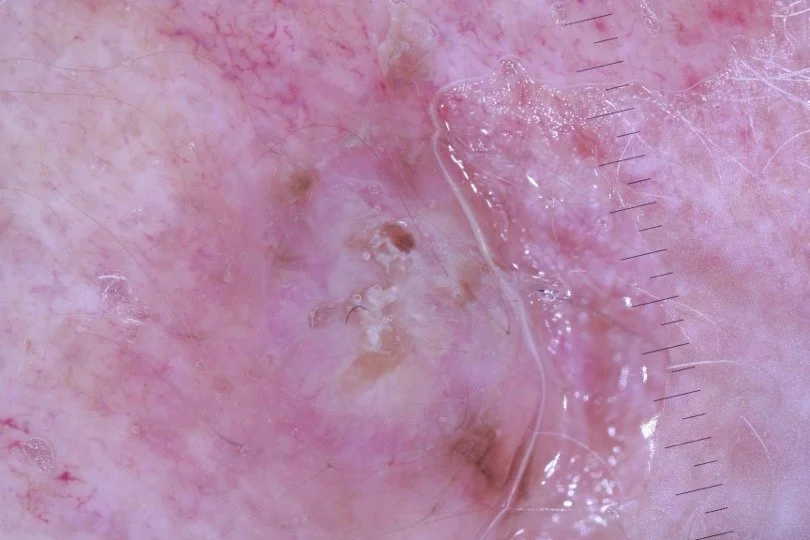Squamous Cell Carcinoma
Squamous cell carcinoma (SCC) is the second most common type of skin cancer, originating from the squamous cells in the epidermis. These cells form the outermost layer of the skin, and when they undergo abnormal growth, SCC develops. It typically occurs on sun-exposed areas like the face, ears, neck, hands, and arms, but can also arise in areas not frequently exposed to sunlight. In addition to prolonged UV exposure, risk factors for SCC include fair skin, a history of sunburns, chronic inflammation or wounds, exposure to radiation or carcinogenic substances, and a weakened immune system. Unlike basal cell carcinoma, SCC has a higher potential to metastasize, or spread, to other parts of the body, making early detection crucial.
Squamous cell carcinoma often presents as a firm, red nodule, a rough, scaly patch of skin, or a sore that heals and reopens. It may also develop as a wart-like growth or an ulcerated lesion. These growths can become painful, bleed, or form crusts. Treatment typically involves surgical excision, for more complex cases, or radiation therapy. Other options for some superficial lesions include cryotherapy and topical medications. If SCC is detected early and treated promptly, the prognosis is generally favorable. However, advanced cases may require more aggressive treatment, especially if the cancer has spread to lymph nodes or other organs. Preventative measures, such as regular skin checks and sun protection, play a key role in reducing the risk of SCC.


